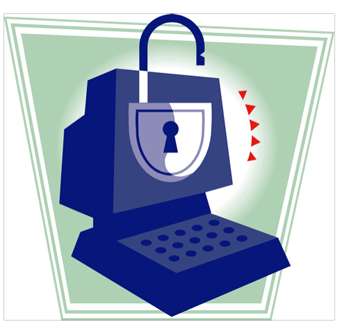The rise of digital technologies, such as smartphones, have come about to make our lives more connected and efficient. However, this connectivity has been exploited by criminals, forcing law enforcement authorities to adapt their investigation strategies in order to counter this increased reliance on technology, Paul Slater, Head of Investigation Solutions, at the software company Nuix.
Former con artist Frank Abagnale, known for the book and subsequent film ‘Catch Me If You Can’ has stated that “technology breeds crime and we are constantly trying to develop technology to stay one step ahead of the person trying to use it negatively.” Fortunately, nowadays, almost all crimes leave behind some form of a digital footprint. Therefore, this reliance on digital technologies by criminals means that law enforcement can harness digital forensics to help combat these threats.
With the increased use of digital technology being exploited by criminals, police forces are challenged to think differently, beating criminals at their own game, such as using their own high-tech crime capabilities to infiltrate criminal gangs’ communications. Part of the challenge they face is that criminals are normally one step ahead of law enforcement – compounded by their slowness in adopting and deploying technology efficiently, whether it be for data processing, case management or other means of digital forensics. Consequently, the various investigative teams within law enforcement must collaborate better and work closely with technologists to bolster their chances of beating criminals in the field.
For investigators and law enforcement agencies to confidently tackle cases, they need to see all the relevant data and clearly understand what is going on. However, this data is often not centralised or easily accessible in a single solution, but can be found across several locations, including the dark web. Further to this, data and potential evidence recovered from devices may not seem obvious to investigators, with inconspicuous, everyday images often holding nondescript meanings to criminal investigations, such as a picture of a “goal” indicating the delivery of a quantity of drugs. Thus, digital forensics and investigation software must be employed to guarantee collaborative analysis of different data sources, ensuring the correct specialists can access, understand and interpret it.
Much of this data belongs to suspects and can be separated into two ambits. Data can lie within suspects’ physical control, being whatever is stored on suspects’ personal devices, or outside suspects’ physical control, stored on cloud providers or social media accounts. Data can take a physical form, involving suspects’ paper trail of documents, receipts and invoices. There is then “ambient” forensic data, which does not belong to suspects’, such as data from wifi routers, mobile or network providers, vehicle telematics, door entry systems and even CCTV. This data, which can help to establish suspects’ whereabouts at a particular time and place, is often invaluable to investigators. When all of these data sources are put together, it can provide investigators with the complete picture, allowing them to use these building blocks of evidence to construct the investigation and successfully prosecute offenders.
Digital forensics tools are vital for police forces to synthesise all the disparate forms of data coming from various sources throughout the investigation, decanting them into software that enables them to process, manage and visualise all of this data with greater ease. This allows law enforcement officials to collaborate and search for what they are looking for, handling cases efficiently.
Several high-profile examples of such investigation methods can be mentioned in the UK alone, with Operation Venetic perhaps the most recent and notable one. International law enforcement teams came together to infiltrate a criminal gang by cracking an encrypted chat app, ultimately leading to over 700 arrests, 77 firearms and 2 tonnes of drugs seized, and over £54 million in criminal cash. The National Crime Agency’s (NCA) technology specialists used data exploitation techniques and technologies to access and subsequently analyse data from the encrypted chat app, gaining access to millions of previously ‘hidden’ messages and hundreds of thousands of images to locate criminals. Investigating such a mammoth operation would be unthinkable without cutting edge digital forensic and analysis software.
As technology becomes more advanced, so does criminals’ desire to exploit it. The onset of the COVID-19 pandemic saw a rise in phishing scams and other related criminal activity taking place via digital means. With a surge in digitally-powered crime, police forces are dealing with larger and more complex caseloads, which become unmanageable by traditional means. The inclusion of digital forensics capabilities has become mainstream across police forces, helping them to tackle the most jarring of cases involving serious and organised criminal offences such as child exploitation and people trafficking, as well as cases involving money laundering, drug raids and cross-border crime.
However, many forces continue to use tools and workflows from back when the 1998 Shipman investigation showcased the value of digital evidence within an investigation. Law enforcement and investigative agencies need to embrace an investigator-led approach to reviewing digital data, empowering investigators to make sense of the disparate data sources and extract the truth from them – allowing highly-skilled digital forensics teams to focus on technological work. As such, with the lines between the digital and physical worlds becoming increasingly blurred, it is critical for police forces to use technologies that help them gain clarity and stay one step ahead of criminals exploiting digital technologies.









